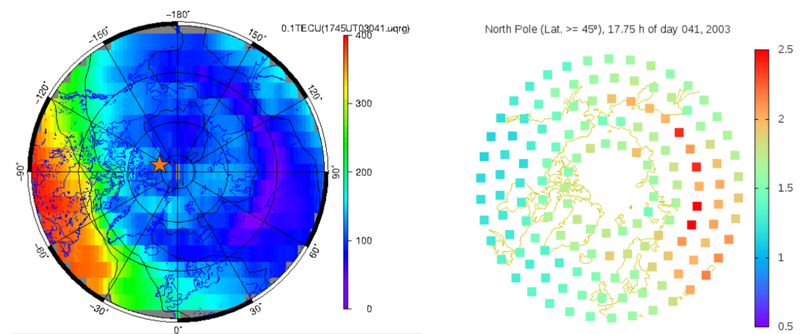Haixia Lyu defends his thesis on contributions to ionospheric modeling with GNSS in the mapping function, tomography and characteristics of polar electronic content
Nov 25, 2020
Haixia Lyu telematically defended her thesis supervised by Professor Manuel Hernández-Pajares on November 17, 2020, entitled "Contributions to ionospheric modeling with GNSS in the mapping function, tomography and characteristics of polar electronic content." The thesis focuses on determining the vertical distribution of low- and high-resolution electron content from data from global positioning systems, GNSS (such as the American GPS) taken from terrestrial receivers and aboard orbiting satellites. low, and to improve knowledge of the climatology of the ionosphere in the polar and mid-latitude northern regions
This dissertation focuses on determining the vertical electron content distribution in low and high vertical resolution from ground-based and LEO on board GNSS data and improving the knowledge of ionosphere climatology in northern mid-latitude and polar regions. The novelty is summarized in the following four aspects:
The first contribution is to propose a new ionospheric mapping function concept - Barcelona Ionospheric Mapping Function (BIMF), in order to improve STEC (Slant Total Electron Content) conversion accuracy from any given VTEC (Vertical Total Electron Content) model. BIMF is based on the climatic modeling of the VTEC fraction in the second layer - µ2, which is the byproduct of UQRG generated by UPC. The first implementation of BIMF is BIMF-nml for the northern mid-latitudes, where the latitudinal variation of µ2 is neglected. µ2 is modeled as function of date and local time. From the user’s perspective, BIMF is the linear combination of µ2 and the standard ionospheric mapping function, and only needs 41 constant coefficients, making BIMF achieve the simplicity for application. The good performance has been demonstrated in the dSTEC assessment for different IGSGIMs: UQRG, CODG and JPLG.
The second contribution is to confirm the capability of UQRG GIMs to detect representative ionospheric features in polar regions through six case studies, including TOI (Tongue of Ionization), trough, flux transfer event, theta-aurora, ionospheric convection patterns and storm enhanced density. The long-term VTEC and µ2 data provide valuable databases for studying the morphology and climatology of polar ionospheric phenomena. The unsupervised clustering results of normalized VTEC distribution show that TOI and polar cap patches exhibit an annual dependence, i.e. most TOI and patches occurring in the North Hemisphere winter and the South Hemisphere summer.
The third contribution is to propose a hybrid method - AVHIRO (the Abel-VaryChap Hybrid modeling from topside Incomplete RO data), to solve an ill-posed rank-deficient problem in the Abel electron density retrieval. This work is driven by the future EUMETSAT Polar System 2nd Generation, which provides truncated ionospheric RO data, only below impact heights of 500 km, in order to guarantee a full data gathering of the neutral part. AVHIRO takes advantage of one Linear Vary-Chap model, where the scale height increases linearly with altitude above the F2 layer peak, and uses Powell search to solve the full electron densities, ambiguity term, and four parameters of the Vary-Chap model simultaneously, taking into account the nonlinear interactions between the unknown parameters.
The fourth contribution is to take advantage of the geometry brought by combining DORIS, ground-based Galileo, ground-based, LEO-POD and vessel-based GPS data and ingest the multi-source dual-frequency carrier phase measurements into the tomographic model to improve the GIM VTEC estimation precision. The impact of adding each type of measurements, which are Galileo data, vessel-based GPS data, DORIS and LEO-POD GPS data, to ground-based GPS data on GIM product is examined according to two complementing evaluation criteria, JASON-3 VTEC comparison and GPS dSTEC test. This study proves the expected better GIM performance by new data ingestion into tomographic model, which is a successful step forward from conception to initial experimental validation.

Share: